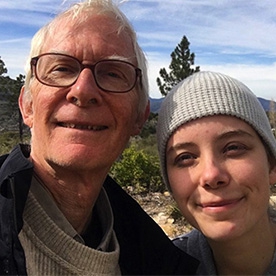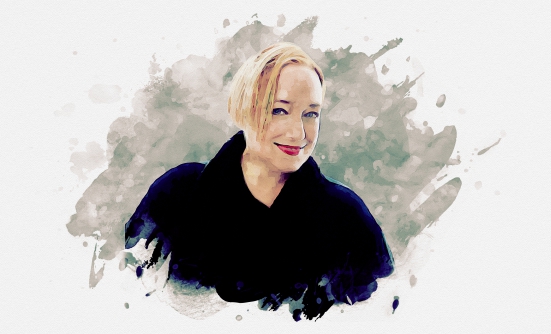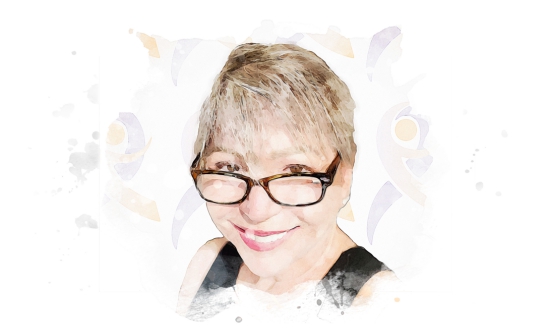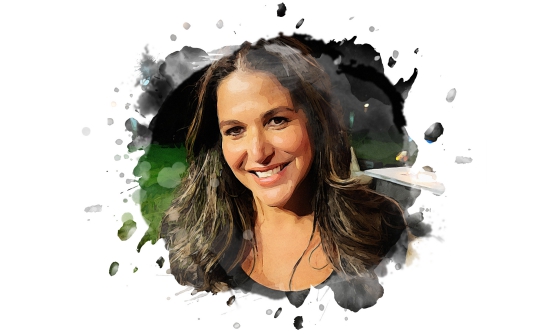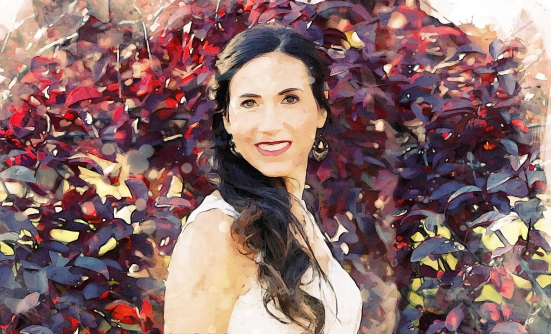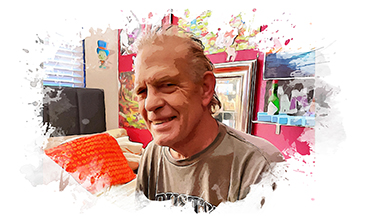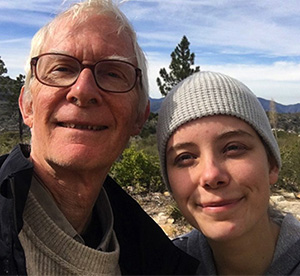
Although my doctors dismissed any connection, I think of my cancer journey as beginning on a Sunday evening in December 2014. My wife Kerstin and I were finishing dinner, and I had the uncomfortable feeling that I’d overeaten. I tried walking it off, but the abdominal pain would not go away. Finally, I couldn’t even stand up and realized it was time to go to the emergency department (ER). The ER staff performed some tests and determined that I had an intestinal blockage. I was admitted to the hospital, and my doctor treated the blockage conservatively, by inserting a tube down my nose to drain the stomach, hoping to avoid emergency surgery. After 3 days, things were slowly moving again, and I went home. I had narrowly dodged the bullet on surgery.
The doctors had no explanation for the blockage. None of the typical preconditions applied (I’d never had abdominal surgery, for example), and a subsequent colonoscopy was normal. But I never felt completely better. After the blockage experience, I was wary of a recurrence. I sensed that it could happen again, and over the next 3 years, I had several episodes when I felt dangerously obstructed (knowing that a blockage is potentially life-threatening if the intestine ruptures).
January 2, 2018, was one of those days when I felt obstructed. I knew the drill—liquids only until the feeling passed. It was my gym day, but I didn’t feel right, so instead, I drove to my office to prepare for the classes I would be teaching during the coming semester.
I’m a professor of history at a university in New Jersey, but before I entered the life of the mind, I was a professional dancer for 10 years in New York City. After retiring from performing in my early thirties, I couldn’t bear letting my body go to seed. I’m now 70 years old and I continue to do stretching and strengthening exercises every morning. I go to the gym 3 times a week (which includes lifting weights, Pilates, and a barre routine). In season, I kayak, bicycle, and backpack.
Back to that day in January, the idea of lunch was unappealing. I felt indescribably bad. Then all at once it hit me—excruciating pain, and I went down on the office floor. I knew I had to get to the hospital. But how? Maybe I could drive myself. Foolhardy, I realized. I couldn’t even walk to the parking lot. Finally, after nearly an hour of lying on the floor, I heard footsteps approaching. I was lucky there was anyone there at all, as it was still winter break, and I called out, “Please call an ambulance.” It had never occurred to me that I could die right there on my office floor.
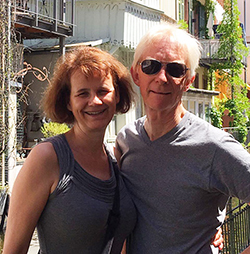
The diagnosis this time was a ruptured appendix. I had emergency surgery that night to remove my appendix, and all went well; another abdominal crisis successfully dispatched. Two weeks later, I had a follow-up visit, and expected to hear, “Everything looks good, be on your way.” Instead, looking grim, the surgeon informed me that the pathologist had found a rare and aggressive tumor in the appendix—an adenocarcinoma with mucinous and signet-ring morphology. The tumor was still very small, and the surgeon had felt nothing when he removed the appendix, but the signet-ring is a very aggressive type of cancer, and it could already have spread to the lymph nodes in the intestine. I would need another operation to remove one-third of my colon, and I might need chemotherapy as well.
Remaining self-possessed but in a state of unreality, I said, “Okay, but if someone is proposing to remove a big chunk of my insides, I should seek the proverbial second opinion.” The surgeon readily agreed. He knew about this rare form of cancer; he kept abreast of the literature, he assured me, but I’m not sure he himself had ever seen this type of cancer.
I began to plan my memorial. If I died while still employed, the event might be held at the university where I teach. I thought of people who should speak at the event. I began to compose a letter to be read, expressing my deep gratitude to dear friends and colleagues for all they’d given me. The thing that brought on the tears was the thought of never seeing the grandchildren that our daughter may have one day.
My wife was away at a conference and called to ask how the doctor’s visit went. I couldn’t answer, “We’ll discuss it when you get back.” But at the end, I had to tell her over the phone. Her immediate response is to go into solution mode: “We’ll get through this,” she said. She had a colleague who, astonishingly, had the exact diagnosis. She recommended her doctor at Memorial Sloan Kettering Cancer Center in New York City.
My hospital and caregivers in New Jersey are first-rate professionals. One does, however, enter another universe at Memorial Sloan Kettering, a major cancer center. As we met with the oncologist, he took the time to explain everything to us, and his attitude and physical demeanor were different from my previous experience. He exuded confidence, saying, “I do this [type of surgery] all the time,” he assured us. There are only about 1,000 cases of cancer of the appendix annually in the United States; by this surgeon’s estimate, he treats about 100 of them, which is 2 surgeries a week. Yes, part of my colon would have to go (a helicolectomy), but other parts of the procedure that my first doctor had suggested were ruled out immediately. The form of cancer I had (or is it present tense?), signet ring, is aggressive, but is very slow growing and could wait another 2 months, until May 4, to the end of the semester with no problem.
When he left the room, I broke down. A wave of relief and lifted burden released me. Before I went to Memorial Sloan Kettering, I thought that oncologists gave people bad news all the time. Now I realized, this oncologist wasn’t in the business of giving people bad news; he was in the business of giving people hope. I walked up to the Metropolitan Museum of Art and let the sublime creations of human civilization pass over me—Greek vases, van Gogh paintings, Dutch Masters, “The Death of Socrates.” These objects felt ennobling as never before. I walked across Central Park. It was late afternoon; the sun was golden on the high buildings above the trees. I had done this walk countless times. Never had it seemed so beautiful.
During the office visit, the surgeon had laid out the possibilities. If they opened me up and found that the cancer had spread, it would be stage IV cancer. They’d sew me right back up, and I’d move straight to chemo. If it had not spread, they’d remove the section of the colon, and if it (and any of the lymph nodes) tested positive, that would be stage III cancer, and, again, chemo. If it did not spread, it would mean stage II cancer, and he would not recommend chemo.
He said that I could go back to the gym, so I concentrated on getting into shape for my next surgery. It’s reassuring to have a focus. Then, I forgot about it, and funeral plans were definitely on hold.

In late April, I went for my pre-op visit with my surgeon. He looked at my most recent CT scan and said he couldn’t tell whether the cancer had spread. If it had, he now said, my chances were 50/50. If I landed on the wrong side of that number, I’d have about 3 years to live. These were very different numbers. I thanked him for his candor, but when I woke with a start at 2:00 am, I realized that he was preparing me for a real possibility. From then on, with every sit-up or leg lift I did, I was ever more certain that I was feeling the spreading tumor and facing the worst. As we left for the hospital on May 4, I was sure that it was stage IV, and I felt I was walking to my own carefully planned funeral.
In the hospital, a sister of a religious order came in. I’m neither religious nor anti-religious, and we prayed together. I remember being wheeled into the operating room, and the enormous 5-armed laparoscopy apparatus suspended from the ceiling that was going to go into me. That was it.
When I woke up, I learned that the cancer had not spread to the abdomen. Wow, so it wasn’t stage IV after all. Let that sink in.
Back at home after a week or so, I got a phone call: the test results were in. “Your lymph nodes are clean. Stage II only, no chemo.” Really? Can that really be so? I didn’t jump up and down for joy. This wonderful news was oddly dumbfounding. The next day I even felt slightly depressed, which friends with more self-awareness than I tell me is not uncommon after a release from such a long period of anxiety.
Two weeks later, in my post-op visit with the surgeon, his physician assistant said, “We actually don’t have that many stage II cases. I can count on one hand the number I’ve seen.” Now I was truly flabbergasted: a practice that sees 100 cases of appendix cancer a year, and even fewer with my rare, aggressive form, and virtually all are more advanced? How is that possible? “Well,” she answered, “Either they don’t get appendicitis, or the pathologist misses it.” So, the hour of agony on my office floor was time well spent. I dashed off a heartfelt note of thanks to the pathologist who had found the tumor.
It is now more than 1 year after the helicolectomy. I meet with my oncologist every 3 months, and all the test results are good. I don’t think of 2018 as being a bad year. I feel it was a life-affirming experience, and not just because of the positive outcome. It deepened my connections to the dear people around me, especially to my wife, who was by my side for the entire journey, to my work, and to nature.
Going into Memorial Sloan Kettering every 3 months is a healthy reminder not to take life and good health for granted. The 2-year mark will be the real threshold. Finally, there’s the mechanism of denial, and how it works. I think it is an effective way of dealing with a difficult reality. But it’s not passivity. The key is—you go into that mode only after you see your doctor and plan your strategy, not before. Take care of yourself.






